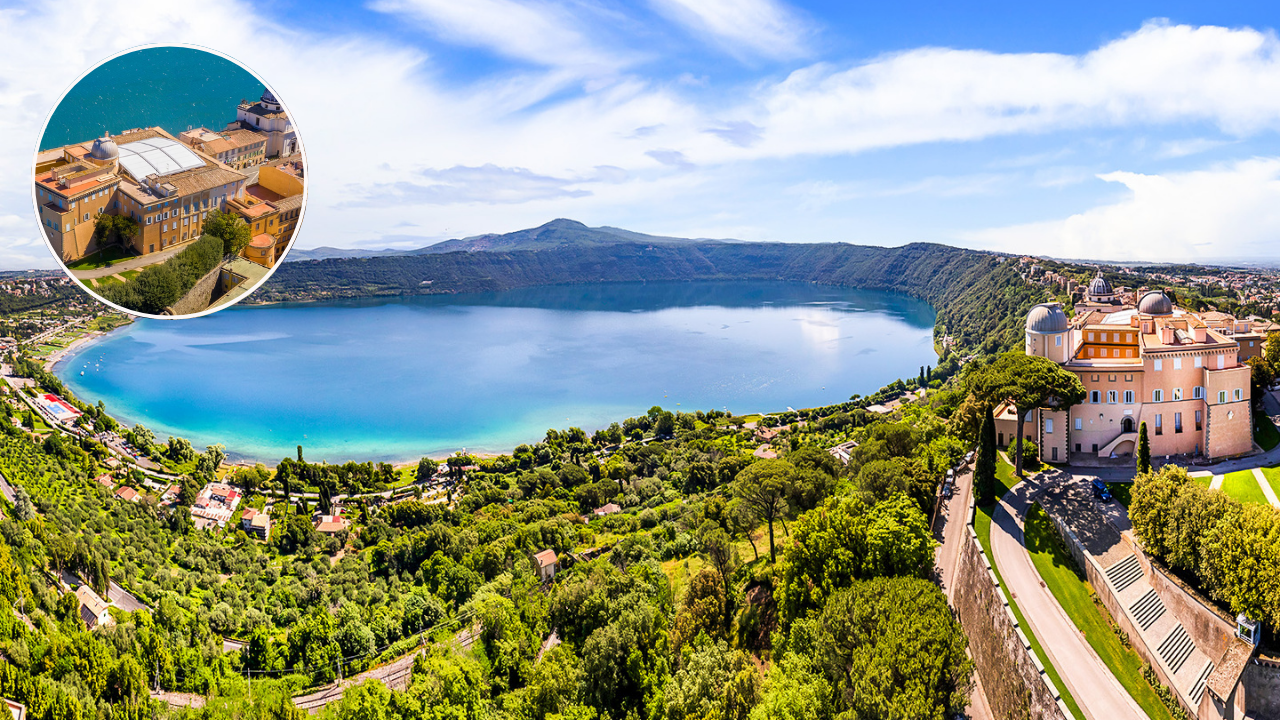Why Popes Have Escaped to Castel Gandolfo Every Summer for 400 Years: Nestled in the rolling hills just south of Rome, Castel Gandolfo has been a serene escape for popes for over 400 years. This charming hilltop town, overlooking the shimmering Lake Albano, isn’t just a vacation spot—it’s a slice of history, spirituality, and natural beauty. From its origins as a medieval castle to its role as a modern ecological hub, Castel Gandolfo has woven itself into the fabric of the papacy. Let’s dive into the story of this papal retreat, its significance, and why it continues to captivate visitors today.
A Brief History of Castel Gandolfo
From Family Castle to Papal Haven
Castel Gandolfo’s journey began with the Gandolfi family, who built a castle in the Middle Ages. By the 1200s, it passed to the Savelli family, who faced financial woes and lost the property to the Vatican in 1596 under Pope Clement VIII. By 1604, it was officially part of the Holy See’s patrimony, transforming into a papal residence under Pope Urban VIII in 1626.
This wasn’t just a real estate deal—it marked the start of a tradition. Popes sought refuge here from Rome’s sweltering summers, drawn to the cooler climate and stunning views. Urban VIII, in particular, loved the area’s lake and mountain vistas, setting the stage for centuries of papal retreats.
The Vatican’s Summer Gem
The papal estate spans 135 acres, including a palace, lush gardens, orchards, and even a farm. The Vatican Observatory, a hub for astronomical research, also calls Castel Gandolfo home. In recent years, part of the grounds became Borgo Laudato Si’, an ecological project inspired by Pope Francis’ 2015 encyclical on environmental care. This blend of history, spirituality, and sustainability makes Castel Gandolfo unique.
Popes Who Shaped Castel Gandolfo
Pope Urban VIII: The Pioneer (1623-1644)
The tradition of summering at Castel Gandolfo began with Urban VIII. As a cardinal, he was smitten by the area’s natural beauty and healthy climate. Once pope, he made it his regular retreat, visiting twice yearly for weeks at a time. He’d stroll through the woods or ride horseback, soaking in the tranquility—a far cry from Rome’s bustle.
Pope Paul VI: Community Builder (1963-1978)
Pope Paul VI was a frequent visitor, spending mid-July to mid-September at the villa. In 1975, he opted for weekly helicopter trips to Rome for audiences rather than returning full-time. He also left a lasting mark by commissioning a pontifical elementary school (now named after him) and the Church of Our Lady of the Lake, strengthening ties with the local community.
Pope John Paul II: A Frequent Guest (1978-2005)
St. John Paul II’s connection to Castel Gandolfo predates his papacy. As Cardinal Karol Wojtyla, he visited for reflection before the 1978 conclave that elected him pope. Just nine days after his election, he broke tradition by visiting in October, not summer. His frequent stays and warm balcony waves to locals endeared him to the town.
Pope Benedict XVI: A Scholar’s Retreat (2005-2013)
Benedict XVI cherished Castel Gandolfo, using it as a quiet space to work on projects like his book Jesus of Nazareth: The Infancy Narratives. In 2013, he spent his final day as pope here, a poignant moment before retiring to the Mater Ecclesiae Monastery. His love for the villa’s calm atmosphere was evident.
Pope Francis: A Shift in Tradition (2013-2025)
Unlike his predecessors, Pope Francis rarely visited, turning the Apostolic Palace into a museum in 2016. His focus on simplicity and staying in Rome marked a departure from the summer tradition, though the villa remained a symbol of papal history.
Pope Leo XIV: Reviving the Tradition (2025-Present)
In 2025, Pope Leo XIV brought the summer retreat back to life, staying in a renovated apartment in Villa Barberini for two weeks in July, extended by two days, with plans to return in August. His activities, like leading the Angelus and a tree-planting ceremony at Borgo Laudato Si’, show a renewed embrace of Castel Gandolfo’s legacy.
Why Castel Gandolfo Matters Today
A Blend of Spirituality and Sustainability
Castel Gandolfo isn’t just a historical site—it’s a living testament to the Church’s evolving mission. The Borgo Laudato Si’ project reflects a commitment to environmental stewardship, aligning with global calls for sustainability. The Vatican Observatory continues to bridge faith and science, while the palace-turned-museum welcomes visitors to explore its rich past.
A Tourist’s Paradise
For travelers, Castel Gandolfo offers more than papal history. The town’s cobblestone streets, quaint cafes, and lake views make it a perfect day trip from Rome. Visitors can tour the papal gardens, marvel at the observatory, or simply enjoy the serene ambiance. In 2025, locals welcomed Pope Leo XIV with open arms, filling the main square to catch a glimpse of their “summer neighbor.”
Fun Facts About Castel Gandolfo
- Papal Farm: The estate’s farm produces olive oil, wine, and fresh produce, some of which is served at the Vatican.
- Astronomical Legacy: The Vatican Observatory, founded in 1891, has been at Castel Gandolfo since 1935, contributing to global astronomical research.
- A Royal Connection: The castle’s name comes from the Gandolfi family, not Gandalf from Lord of the Rings, though the similarity sparks fun conversations!
Visiting Castel Gandolfo
Planning a trip? Take a train from Rome (about 40 minutes) and explore the papal villa, open to the public as a museum. Check out the gardens or enjoy a coffee in the main square, where a framed photo of Pope Leo XIV might greet you in a local café. Summer is peak season, especially during papal visits, so book tickets early.
Final Thoughts
Castel Gandolfo is more than a papal summer home—it’s a place where history, faith, and nature converge. From Urban VIII’s horseback rides to Leo XIV’s tree-planting ceremonies, this hilltop haven continues to inspire. Whether you’re a history buff, a spiritual seeker, or just craving a peaceful escape, Castel Gandolfo invites you to discover its timeless charm.
